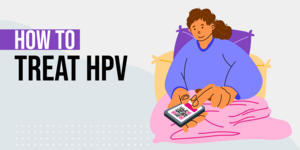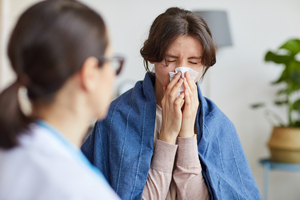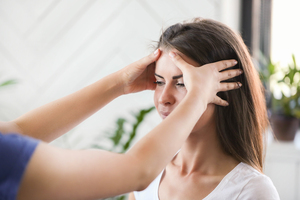Key points
- A well-stocked first aid kit can help manage minor injuries and emergencies at home.
- Essential items include assorted bandages, antiseptic, antibiotic ointment, hydrocortisone cream, and medical tape.
- Additional useful tools are scissors, tweezers, cold packs, hand sanitizer, and a clean blanket.
- It's crucial to keep all items clean, check expiry dates regularly, and seek professional help for serious injuries.
- The article concludes by reminding readers to use good judgment when deciding whether to treat injuries at home or seek professional help at a clinic.

Accidents never happen at the most relaxed moments. They usually occur when we're already tired, busy, and stressed, making it even more hectic to stop, think, and treat the injury. By having these things on hand, tucked conveniently in a first aid kit carrying case, you'll be a step ahead when boo-boos do occur.
1. Assorted Bandages
Stock the first aid kit with every size bandage from a tiny one to cover a small prick to a larger one capable of covering a scrape or burn. Wrap the bandages in a plastic zipper bag to keep them dry and sterile until they're needed.
2. Antiseptic
Any wound is capable of becoming infected, so after the bleeding stops the first course of action is to treat it with antiseptic. Puncture wounds are particularly susceptible, so always visit an urgent care center if the wound is large or deep.
3. Antibiotic Ointment
Antiseptics kill the bacteria on the site immediately, but antibiotic ointments keep the wound germ free until it heals enough not to allow contaminants in. These ointments may also help prevent scarring, and can speed recovery.
4. Hydrocortisone Cream
You can stop bug bites, poison oak and ivy, and other itchy nuisances with hydrocortisone cream. Check the expiration dates on creams and ointments twice per year. A good way to remember this is to check your first aid kit each fall and spring when you set your clocks and check your smoke alarm batteries.
5. Scissors
Scissors are handy for opening bandage packages and cutting tape to secure bandages. Scissors are also useful for opening stubborn packages of creams, ointments, and over the counter medications. Pediatric urgent care specialists recommend keeping the first aid scissors clean and separate from scissors used for cooking and other household purposes to prevent contamination of wounds.
6. Medical Tape
Tape is necessary for securing bandages, but it's also useful if you need to apply steady pressure to stop bleeding. Unlike ordinary adhesive tape, specifically designed medical tape is gentle and easy to remove. It's also sterile, which is important when dealing with open wounds.
7. Tweezers
Like scissors and tape, it's good to have a clean pair of tweezers in the first aid kit, so you're not trying to remove splinters or a tick with tweezers gobbed with makeup from the bottom of your purse or bathroom drawer. Tweezers are also helpful for removing debris from scratches and cuts.
8. Cold Packs
Cold packs can be prepackaged dry ice or simply a zippered plastic bag with a few ice cubes, but cold packs are wonderful for reducing and preventing swelling of contusions and sprains. If you go the baggie and ice route, use a cloth between the cold pack and skin to prevent frostbite.
9. Hand Sanitizer
It's important to keep germs out of cuts, scratches, and burns. Hand sanitizer is a fast way to sterilize your hands when washing isn't possible or convenient. If the cut is deep or there is a severe burn, seek emergency family care instead of trying to treat it yourself.
10. Clean Blanket
When wounds are severe, shock is always a possibility. Instead of grabbing a blanket from the couch that the dog slept on last night, keep a clean blanket in the first aid bag.
Emergencies happen, but with a well stocked first aid kit, you'll be on top of them in a flash. Use good judgment when it comes to treating at home versus seeking professional help at a walk-in clinic.FAQs
What is the primary purpose of a first aid kit?
A first aid kit is designed to manage minor injuries and emergencies at home before professional medical help can be sought.
What are some essential items to include in a first aid kit?
A first aid kit should include items such as assorted bandages, antiseptic, antibiotic ointment, hydrocortisone cream, medical tape, scissors, tweezers, cold packs, hand sanitizer, and a clean blanket.
How often should I check the items in my first aid kit?
You should check the items in your first aid kit at least twice a year to ensure they are not expired and are in good condition.
Should I use the same scissors for my first aid kit and other household purposes?
No, it's recommended to keep a separate pair of scissors for your first aid kit to prevent contamination of wounds.
When should I seek professional medical help instead of using my first aid kit?
You should seek professional help for serious injuries such as deep cuts, severe burns, or if the injured person is in shock.
What is the use of medical tape in a first aid kit?
Medical tape in a first aid kit is used for securing bandages and applying steady pressure to stop bleeding. It is gentle, easy to remove, and sterile, making it safe for use with open wounds.
Why should a first aid kit include a cold pack?
A cold pack is included in a first aid kit to help reduce and prevent swelling of contusions and sprains. It can be a prepackaged dry ice or a zippered plastic bag with a few ice cubes.
What is the role of a clean blanket in a first aid kit?
A clean blanket in a first aid kit is used in case of severe wounds where shock is a possibility. It's important to use a clean blanket from the first aid kit rather than a blanket from around the house that may not be clean.









